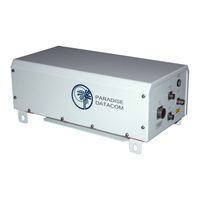Paradise Datacom HPAC2140AC Series Manuals
Manuals and User Guides for Paradise Datacom HPAC2140AC Series. We have 1 Paradise Datacom HPAC2140AC Series manual available for free PDF download: Operation Manual
Paradise Datacom HPAC2140AC Series Operation Manual (144 pages)
Compact Outdoor Solid State Power Amplifier
Brand: Paradise Datacom
|
Category: Amplifier
|
Size: 3 MB
Table of Contents
Advertisement
Advertisement
Related Products
- Paradise Datacom HPAC2030AC Series
- Paradise Datacom HPAC2040AC Series
- Paradise Datacom HPAC2050AC Series
- Paradise Datacom HPAC2075AC Series
- Paradise Datacom HPAC2100AC Series
- Paradise Datacom HPAC2200AC Series
- Paradise Datacom HPAC2250AC Series
- Paradise Datacom HPAC2300AC Series
- Paradise Datacom HPAC-200-RM
- Paradise Datacom HPAC-250-RM
